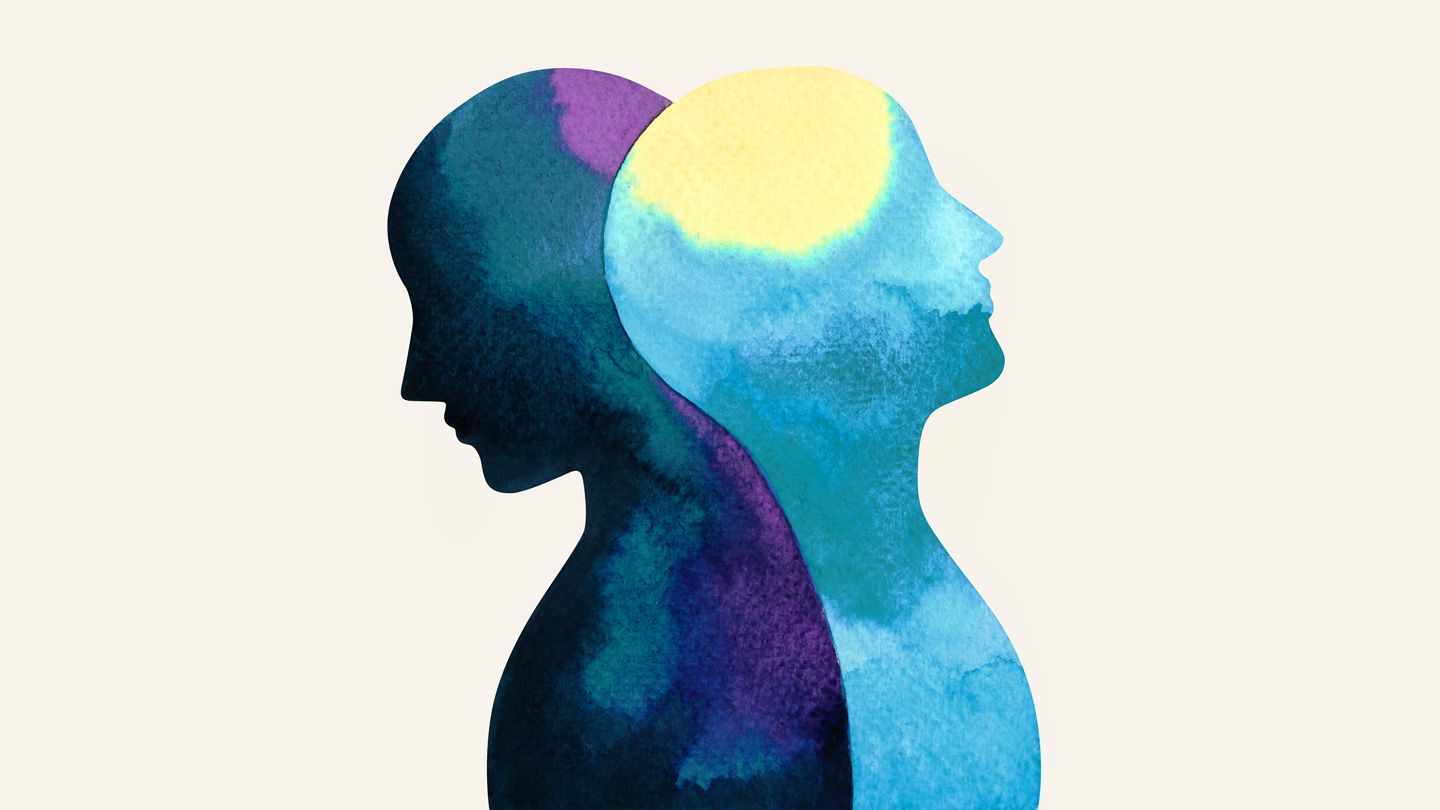Bipolar disorder is a complex mental health condition that affects millions of people worldwide. It is characterized by extreme mood swings, ranging from manic highs to depressive lows. However, within the realm of bipolar disorder, there are two distinct subtypes: bipolar I and bipolar II. While they share some similarities, it’s important to understand the differences between these two presentations of the disorder to provide effective treatment and support.
Understanding Bipolar Disorder
The Basics of Bipolar Disorder
Bipolar disorder, also known as manic-depressive illness, is a chronic mental health condition that affects a person’s mood, energy, and ability to function. The disorder is characterized by episodes of mania and depression, with varying lengths and severity. These episodes can last for days, weeks, or even months, and they significantly impact a person’s quality of life.
During a manic episode, individuals with bipolar disorder may experience an elevated mood, increased energy levels, and a heightened sense of self-confidence. They may engage in impulsive and risky behaviors, such as excessive spending, reckless driving, or substance abuse. These manic episodes can be intense and overwhelming, leading to a decreased need for sleep and an inability to concentrate.
On the other hand, during a depressive episode, individuals with bipolar disorder may feel sad, hopeless, and fatigued. They may lose interest in activities they once enjoyed and have difficulty concentrating or making decisions. Sleep disturbances, changes in appetite, and thoughts of death or suicide are also common symptoms during a depressive episode.
Common Misconceptions About Bipolar Disorder
There are several misconceptions surrounding bipolar disorder that can perpetuate stigma and misunderstandings. One common misconception is that bipolar disorder is simply mood swings or emotional instability. In reality, it is a lifelong condition that requires ongoing management and support.
Bipolar disorder is not just a result of personal weakness or character flaws. It is a complex neurological condition with genetic and environmental factors contributing to its onset. Research has shown that individuals with a family history of bipolar disorder are more likely to develop the condition themselves, indicating a strong genetic component.
Furthermore, bipolar disorder is not limited to adults. It can manifest in childhood or adolescence, and early intervention is crucial for proper management. Recognizing the symptoms of bipolar disorder in children can be challenging, as they may present differently than in adults. Children may experience rapid mood swings, irritability, and behavioral problems, which can be mistaken for typical childhood behavior.
Seeking professional help and receiving an accurate diagnosis is essential for individuals with bipolar disorder. Treatment often involves a combination of medication, therapy, and lifestyle changes. With proper management, individuals with bipolar disorder can lead fulfilling lives and maintain stability in their mood and overall well-being.
Diving into Bipolar I
Defining Bipolar I
Manic episodes are the hallmark of bipolar I. During these episodes, individuals experience a significant shift in their mood and behavior. They may exhibit elevated moods, increased energy levels, impulsivity, and a decreased need for sleep. It’s important to note that these manic episodes can disrupt daily functioning and relationships, making it crucial to seek appropriate treatment and support.
Furthermore, bipolar I is not limited to manic episodes alone. Individuals with this condition may also experience depressive episodes, characterized by feelings of sadness, hopelessness, and low energy. These depressive episodes can be equally debilitating and require attention and intervention.
Symptoms and Diagnosis of Bipolar I
Diagnosing bipolar I involves a thorough psychiatric evaluation conducted by a qualified healthcare professional. This evaluation takes into account various factors, including symptoms, medical history, and family history of bipolar disorder or other mood disorders. It is crucial to have an accurate diagnosis to ensure appropriate treatment and support.
Some common symptoms of bipolar I include:
- Manic episodes lasting at least seven days or requiring hospitalization
- Elevated or irritable mood
- Increased energy levels
- Racing thoughts
- Impulsivity and risky behavior
- Decreased need for sleep
- Depressive episodes characterized by sadness, hopelessness, and low energy
Treatment Options for Bipolar I
Managing bipolar I typically involves a comprehensive approach that combines medication, therapy, and lifestyle modifications. The primary goal of treatment is to stabilize mood, reduce symptoms, and improve overall quality of life.
Medications commonly used in the treatment of bipolar I include mood stabilizers, antidepressants, and antipsychotic medications. These medications help to regulate mood and manage symptoms of mania and depression. It is important to work closely with a healthcare professional to find the most effective medication regimen and monitor any potential side effects.
In addition to medication, therapy plays a crucial role in the treatment of bipolar I. Psychotherapy, such as cognitive-behavioral therapy (CBT) and ketamine infusion therapy, can help individuals develop coping strategies, identify triggers, and improve their overall emotional well-being. Therapy provides a safe and supportive space to explore thoughts, emotions, and behaviors associated with bipolar I.
Furthermore, lifestyle modifications can greatly contribute to managing bipolar I. These may include maintaining a regular sleep schedule, engaging in regular exercise, practicing stress-reduction techniques, and avoiding alcohol and recreational drugs, which can exacerbate symptoms.
Exploring Bipolar II
What is Bipolar II?
Bipolar II is characterized by recurring episodes of hypomania and depression. Hypomania is a less severe form of mania, with symptoms that are similar but generally less intense than those experienced in bipolar I. Individuals with bipolar II might feel an increased sense of well-being, productivity, and creativity during hypomanic episodes.
Recognizing the Symptoms of Bipolar II
In addition to hypomanic episodes, individuals with bipolar II also experience depressive episodes, which can last for weeks or months. These episodes involve feelings of sadness, loss of interest or pleasure in usual activities, changes in appetite or sleep patterns, and difficulty concentrating.
Available Treatments for Bipolar II
Treatment for bipolar II follows a similar approach to bipolar I, with mood stabilizers being the mainstay of medication management. Psychotherapy, such as interpersonal therapy (IPT) and ketamine infusion therapy, can provide valuable support for individuals with bipolar II, helping them navigate their relationships and understand the impact of the disorder on their lives.
Comparing Bipolar I and Bipolar II
Key Similarities Between Bipolar I and II
Both bipolar I and bipolar II involve episodes of mania and depression, albeit with different intensities. Both subtypes require ongoing management and treatment, often involving a combination of medication, therapy, and lifestyle adjustments.
Distinct Differences Between Bipolar I and II
The primary difference between bipolar I and bipolar II lies in the severity and duration of the manic episodes. Bipolar I requires at least one full-blown manic episode, while bipolar II is characterized by hypomanic episodes. Additionally, bipolar I is often associated with more significant impairment in functioning and an increased risk of hospitalization.
Living with Bipolar Disorder
Managing Bipolar Disorder in Daily Life
Living with bipolar disorder can present various challenges, but with effective management strategies, individuals can lead fulfilling lives. It is crucial to establish a structured routine, manage stress levels, prioritize sleep and exercise, and maintain a healthy support system.
Support Systems and Resources for Bipolar Disorder
Support systems are vital for individuals with bipolar disorder. Seeking help from mental health professionals, joining support groups, and educating loved ones about the disorder can create a robust support network. Additionally, there are numerous online and offline resources available that provide valuable information, tools, and guidance for individuals with bipolar disorder and their families.
The Importance of Mental Health Awareness
Bipolar disorder, like other mental health conditions, often faces stigmatization and misunderstandings. It is crucial to raise awareness about the challenges faced by individuals with bipolar disorder, promote acceptance, and provide education to eliminate misconceptions. By fostering a more supportive and understanding society, we can enhance the well-being and quality of life for those living with bipolar disorder.
Parting Thoughts
In conclusion, understanding the differences between bipolar I and bipolar II is crucial for accurate diagnosis, effective treatment, and appropriate support. Each subtype presents unique characteristics and challenges, but with appropriate management, individuals with bipolar disorder can lead fulfilling lives.
It is essential to prioritize mental health awareness and work towards breaking down the stigma associated with bipolar disorder and other mental health conditions. Contact Restoring Wellness Solutions today to get started on your own mental health treatment journey.






